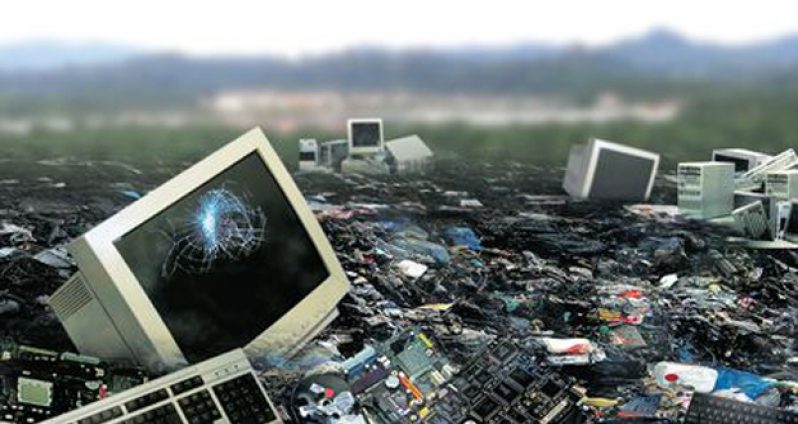Challenges and Opportunities
CONSCIOUS of the growing volume of E-Wastes generated in our society, the Environmental Protection Agency (EPA) has developed Environmental Guidelines for Management and Export of Electronic Wastes Electronic Wastes. These Guidelines will be presented in a two-part series highlighting challenges and opportunities in managing E-Wastes in our local context.
We are using more electronics
The term E- Wastes is short for Electronic Wastes generated from broken or outdated electronic devices. Everyday, we use and have access to common electronic devices that are part of modern life. Computers, telephones and cellular phones are today, indispensable in everyday communication. Most homes commonly have television sets, MP3 Players, DVD Players and video games as part of the usual entertainment fixture. Further, it has become second nature to capture important moments of life with digital cameras and camcorders that have long replaced traditional still cameras for this purpose.
Today, people are purchasing and using more electronics. At the same time, electronic technology continues to advance at a rapid rate. As such, electronic devices become outdated and are replaced more often. For example, whereas in 1997, a computer had a lifespan of about six years, this was reduced to two years in 2005! Currently, mobile phones have a lifespan of just two years!
We are generating more E-Wastes
At the turn of the 21st century, the use of electronic devices, particularly computers, has skyrocketed in developing countries. In fact, in the last five years, Internet use has increased by almost fifty percent (50%), rising from forty-four percent (44 %) in 2006, to sixty-two percent (62%) in 2011. By 2030, it is estimated that developing countries will discard 400-700 million tons of obsolete computers annually. This is more than twice the amount of computer generated E-Waste estimated annually for developed countries.
Developing countries will therefore face an enormous challenge in the near future, to manage the high volume of E-Waste that they are predicted to be generate. This challenge will stem mostly from the lack of the necessary capacity to manage and recycle the hazardous materials found in E-Wastes. In fact, at present most developing countries, lack the facilities and systems to appropriately dispose of the E-Wastes they generate. What often happens is that E-Wastes are mixed together with municipal waste and disposed; a practice that leads to pollution and poses a serious health risk.
We need to manage E-WASTES
Some substances present in electronics though toxic do not pose a health risk, once well enclosed in the working device. However, if handled inappropriately or inhaled and ingested these substances are dangerous to health. The toxic materials present in E-Wastes when exposed to the elements (rain, sunlight, high temperatures) e.g. at disposal sites may react with components of other wastes and become toxic to the environment and persons in proximity. Also, when electronic wastes burnt in the open, they release toxic fumes into the atmosphere which are toxic when inhaled by persons in the vicinity.
Chemical elements such as barium, cadmium, lead, lithium, mercury are associated with E-Wastes. These have been linked to health effects, such as, birth defects and brain, kidney and liver and reproductive system damage. To address the issue of E-Waste Management, a number of global initiatives have been undertaken that are linked to the objectives of the Basel Convention on Control of Trans-boundary Movement of Hazardous Wastes and their Disposal which was adopted twenty-five (25) years ago in Sweden. Among these initiatives are:
• A Partnership Action Computing Equipment (PACE) which was set up in 2008, to provide information on managing computing equipment from its collection point to refurbishment, recovery or recycle point.
• With the burgeoning mobile phone industry, the Mobile Phone Partnership Initiative (MPPI) was established to develop and promote environmentally-sound management for end-of-life mobile phones.
• With the use of electronic devices expanding in Africa an initiative, the E- Waste Africa Project was set up to enhance the environmental governance of E-wastes and create favourable social and economic conditions for small businesses in the recycling sector in Africa.
• In 2012, theBasel Convention also released the Draft Technical Guidelines for the Trans-boundary Movement of E-wastes and Used Electrical and Electronic Equipment which focus on the management of E-wastes as they relate to the principles of the Convention and provide general guidance on the trans-boundary movement of E-Waste.
While there are various global initiatives on-stream to manage E-wastes, we need to examine how these apply in our national context and the challenges and opportunities the present.This will be explored in next week’s article – the 2nd part of this 2-article series on the Environmental Guidelines for Management and Exportof E-Wastes.
You can share ideas and questions by sending letters to: “Our Earth, Our Environment”, C/o EIT Division, Environmental Protection Agency, Ganges Street, Sophia, GEORGETOWN or email eit.epaguyana@gmail.com.




.png)









